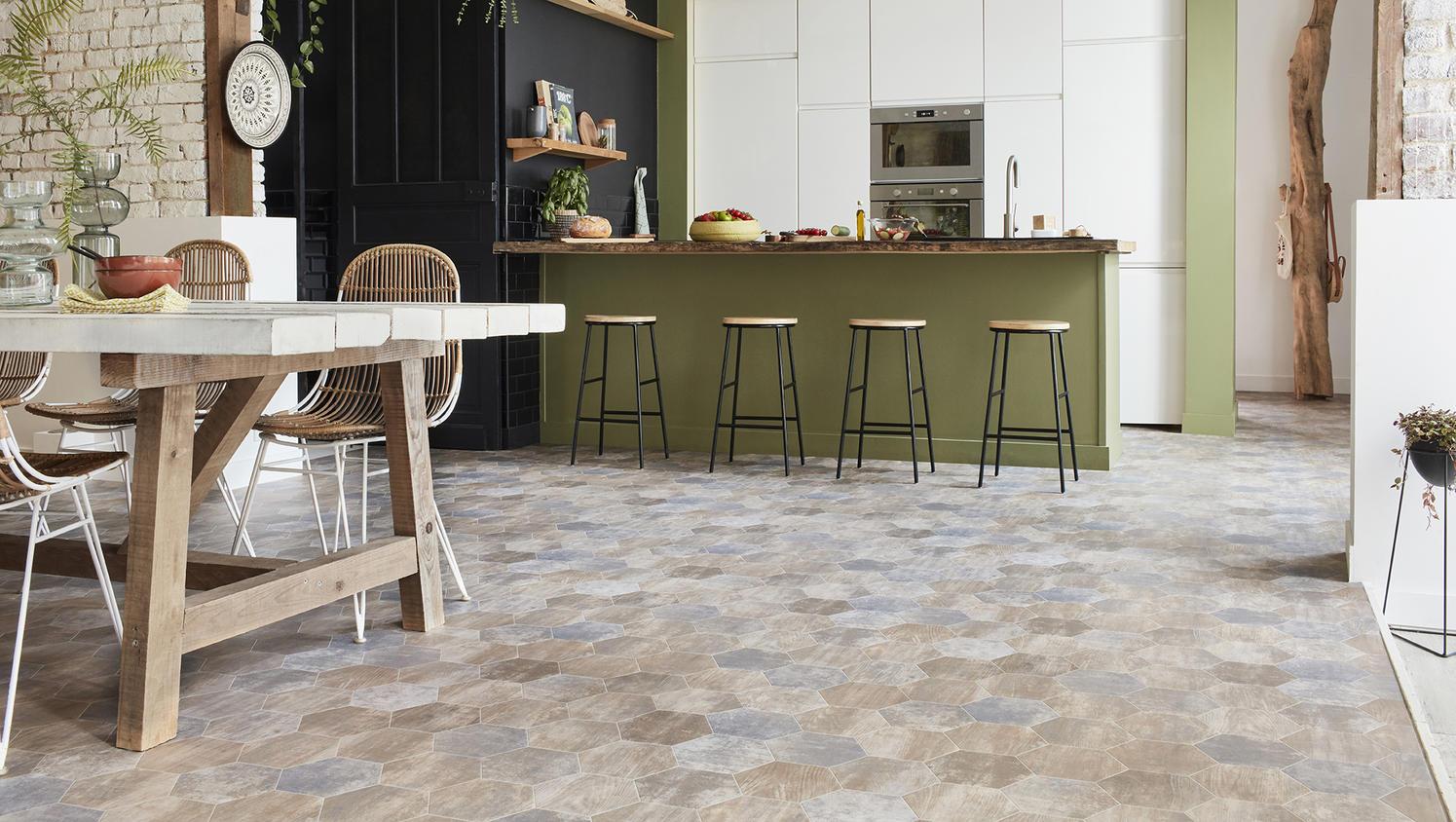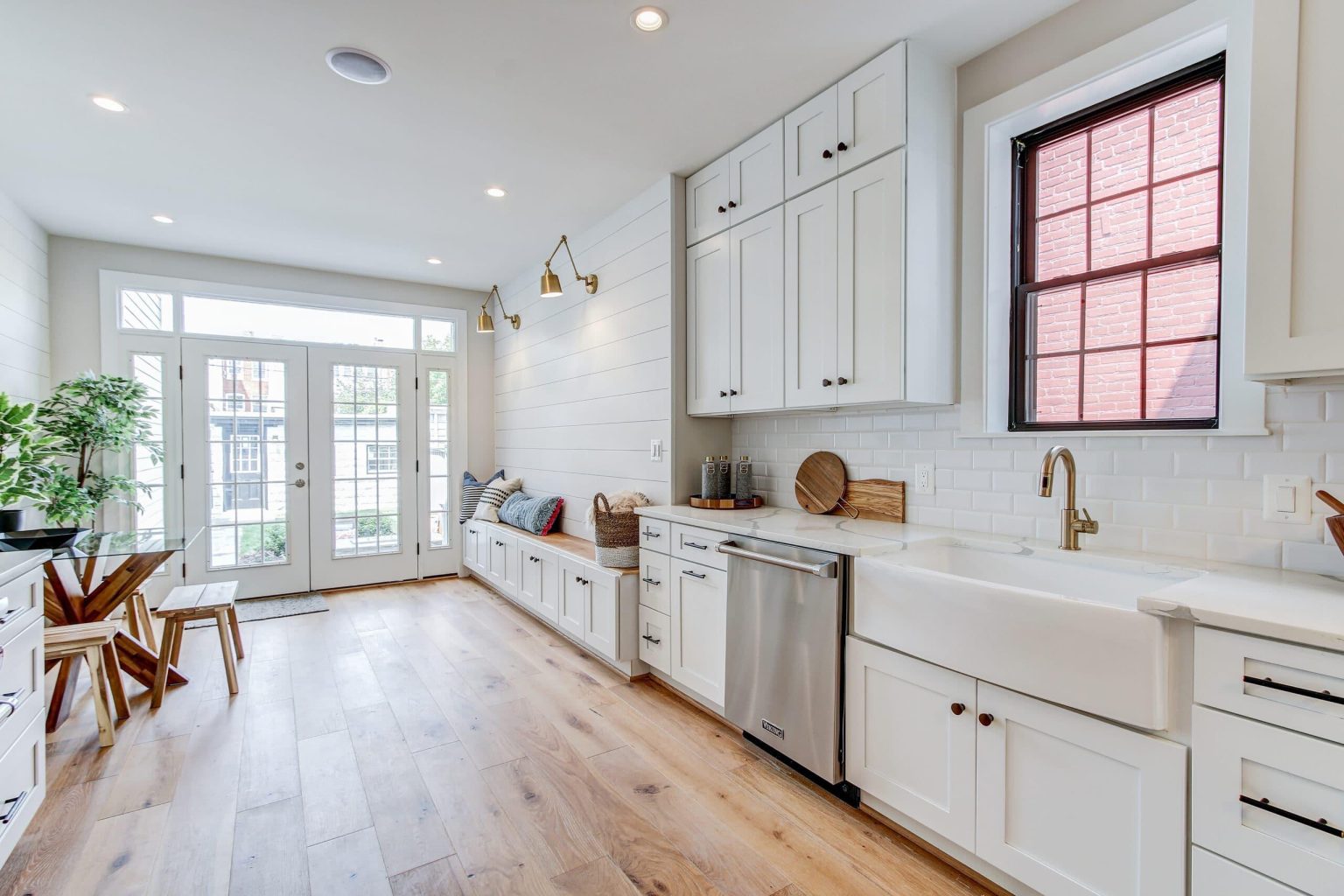When it comes to designing a kitchen that seamlessly marries functionality with aesthetics, the choice of flooring plays a pivotal role. In one of the most high-traffic areas of the home, flooring must not only endure the daily wear and tear of foot traffic, spills, and dropped utensils but also reflect personal style and complement the overall décor. With an array of materials available—from classic hardwood to modern vinyl, and from elegant tile to cozy cork—homeowners face the essential task of selecting the perfect flooring that balances durability, design, and value. This article will explore the top kitchen flooring choices on the market today, highlighting their unique features, longevity, maintenance requirements, and cost-effectiveness, enabling you to make an informed decision that enhances both the beauty and functionality of your culinary space. Whether you’re embarking on a full remodel or simply looking to refresh your kitchen’s look, understanding these flooring options will empower you to create a stylish and resilient foundation for your home.
Table of Contents
- Exploring the Durability of Popular Kitchen Flooring Materials
- Assessing Style Options to Enhance Kitchen Aesthetics
- Evaluating Cost-Effectiveness and Long-Term Value
- Comparing Maintenance Requirements Across Flooring Choices
- Key Takeaways
Exploring the Durability of Popular Kitchen Flooring Materials

When it comes to selecting flooring for the kitchen, durability is paramount, particularly due to the high traffic and potential for spills. Among the most favored choices, ceramic tile stands out for its resistance to moisture and stains, making it ideal for a busy cooking environment. It can be found in an array of styles and textures, enabling homeowners to achieve both functionality and aesthetic appeal. On the other hand, vinyl flooring has gained popularity for its cost-effectiveness and ease of maintenance. Available in sheets, tiles, or planks, modern vinyl replicates the look of wood or stone without sacrificing resilience. Furthermore, linoleum offers a natural alternative, as it is made from renewable materials and is not only durable but also antibacterial, ensuring a clean cooking space.
For homeowners prioritizing a touch of luxury, engineered hardwood stands out as a viable option. Offering a natural wood appearance, engineered hardwood can withstand moisture better than solid wood, making it suitable for kitchens. However, care must be taken with heavy items that could dent the surface. Natural stone options like granite or slate provide unmatched beauty and longevity, but they often require sealing and regular maintenance to prevent stains. Lastly, here’s a quick comparison among popular kitchen flooring materials:
| Material | Durability | Maintenance | Aesthetic Appeal |
|---|---|---|---|
| Ceramic Tile | High | Low | Varied |
| Vinyl | Moderate | Very Low | Varied |
| Linoleum | Moderate | Low | Natural |
| Engineered Hardwood | Moderate to High | Moderate | Warm |
| Natural Stone | High | Moderate | Elegant |
Assessing Style Options to Enhance Kitchen Aesthetics

When it comes to enhancing the overall aesthetics of your kitchen, the choice of flooring plays a crucial role. Opting for materials that are not only durable but also visually appealing can elevate your kitchen’s design. Each flooring option offers unique stylistic elements that can reflect your personal taste. For instance, hardwood floors create a warm, inviting atmosphere, while ceramic tiles provide a sleek, modern look. If you prefer something more rustic, vinyl planks mimic natural wood or stone without the associated upkeep, making them an excellent choice for busy households.
Additionally, integrating various textures and colors can significantly impact the kitchen’s visual appeal. Some popular options include:
- Laminate: Affordable and available in multiple designs that resemble genuine wood.
- Natural Stone: Offers unmatched elegance; however, it may require more maintenance.
- Cork: Eco-friendly and available in multiple finishes; provides excellent cushioning underfoot.
To further clarify the pros and cons of each flooring choice, the following table presents a snapshot of key features:
| Flooring Type | Durability | Maintenance | Style Options |
|---|---|---|---|
| Hardwood | High | Moderate | Classic, Rustic |
| Ceramic Tile | Very High | Low | Modern, Versatile |
| Vinyl Plank | High | Very Low | Natural Look |
| Cork | Moderate | Low | Earthy, Unique |
Evaluating Cost-Effectiveness and Long-Term Value
When selecting flooring for your kitchen, considering cost-effectiveness is essential for a purchase that pays off in the long run. The initial cost can vary significantly among different materials, but the right choice should account for durability, maintenance, and aesthetic appeal over time. For instance, while hardwood flooring may have a higher upfront cost, its longevity and ability to improve your home’s value can justify the investment. In contrast, vinyl flooring may be more affordable initially but might need replacement sooner, increasing overall expenses. It’s important to weigh these factors before making a decision.
Additionally, long-term value encompasses not just the price tag, but also how the flooring contributes to the kitchen’s functionality and style. Elements to consider include:
- Resilience to wear and tear: High-traffic areas require materials that can withstand daily use.
- Ease of cleaning: A floor that resists stains and spills can save time and money on upkeep.
- Return on investment: Some flooring materials are more likely to enhance property values than others.
To illustrate how different options stack up in terms of costs and benefits, consider the following table:
| Flooring Type | Average Cost per Square Foot | Expected Lifespan | Maintenance Level |
|---|---|---|---|
| Hardwood | $8 – $15 | 20 – 30 years | Moderate |
| Vinyl | $2 – $5 | 10 – 15 years | Low |
| Ceramic Tile | $3 – $7 | 20 – 30 years | Low |
| Laminate | $1 – $3 | 10 – 15 years | Low |
By carefully evaluating these parameters, homeowners can make informed decisions that ensure their kitchen remains a stylish and functional space for years to come.
Comparing Maintenance Requirements Across Flooring Choices
When selecting flooring for your kitchen, maintenance requirements often play a crucial role in the decision-making process. Different materials demand varying levels of care to keep them looking their best. For instance, ceramic tiles are not just aesthetically pleasing; they are also relatively low-maintenance. A simple sweep and occasional mopping with a gentle cleaner can suffice to maintain their shine. On the other hand, natural wood requires more attention, needing regular sealing and the occasional refinishing to protect against moisture and wear. This can turn into a significant commitment for homeowners who prefer a hassle-free environment.
In contrast, vinyl flooring offers an excellent balance of ease and durability. It’s resistant to stains and scratches, requiring mere sweeping and mopping to keep it clean. Meanwhile, stone flooring also stands out for its durability but requires regular sealing to prevent water damage and staining, which elevates its maintenance level. Here’s a quick comparison of typical maintenance needs for various flooring types:
| Flooring Type | Maintenance Frequency | Special Care Needed |
|---|---|---|
| Ceramic Tiles | Weekly cleaning | Occasional deep clean |
| Natural Wood | Daily sweeping; every few months for thorough cleaning | Periodic sealing and refinishing |
| Vinyl Flooring | Weekly cleaning | Minimal; avoid harsh chemicals |
| Stone Flooring | Weekly cleaning | Regular sealing required |
Key Takeaways
selecting the right kitchen flooring requires a careful balance of durability, style, and value. Each flooring option discussed—from the timeless appeal of hardwood to the practicality of vinyl and the elegance of tile—offers unique advantages to cater to diverse preferences and lifestyles. As the heart of the home, your kitchen deserves a floor that not only withstands daily wear and tear but also enhances the overall aesthetic of your space. By considering factors such as maintenance, longevity, and aesthetics, you can make an informed choice that aligns with your vision and budget. Ultimately, investing in quality flooring not only elevates your kitchen’s design but also contributes to its functionality, setting the stage for years of culinary creativity and family gatherings. Choose wisely, and let your flooring be the foundation of your kitchen’s success.



